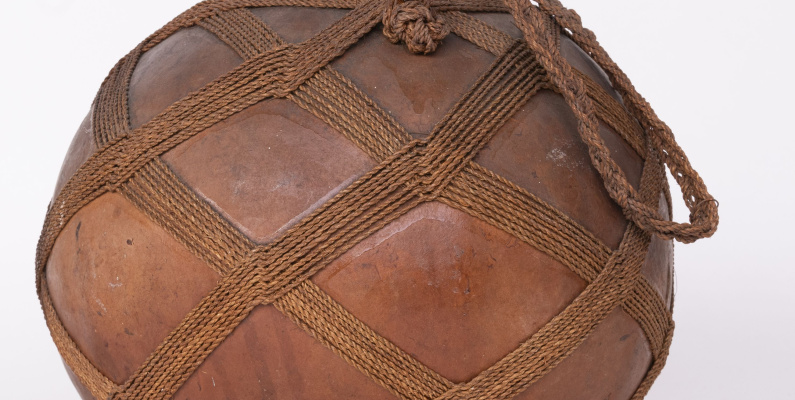
To celebrate the New Caledonian Season, a selection of short movies will be shown on Sunday 14 and 21 September. The Season is a recurring event showcasing the best New Caledonian fiction short films of the year. Screened in their original version (French and/or Kanak languages) with English subtitles, these short films are accompanied by a video interview with each director.
In addition to the films, there will be a small display of Kanak objects from the Museum collection, chosen by Christiane Leurquin (Senior Lecturer in Social Anthropology, ŌtākouWhakaihu Waka–University of Otago) and Kim Cousins (Alliance Française President). Pieces on loan from the local community will also be displayed in Atrium 1 of Tūhura Otago Museum.
The pieces include a hafted adze (donated in 1928 by the Museum’s then Assistant Curator of Anthropology, H. D. Skinner) and several nephrite adze blades. The adze is the only traditional Kanak stone tool: the polished stone is affixed to a wooden handle using coconut husk fibres on a 35 to 45-degree angle.
A ceremonial axe (below) made of a nephrite (jade) blade affixed to a wooden handle covered with a thin twine made of flying fox hair (Pteropus sp.) is an example of the very valuable artefacts that were used by High Chiefs to accompany speeches during important ceremonies. The axe, however, is incomplete: the lower extremity of the haft was usually adorned with a tapa cloth covered coconut and a thin twine made of flying fox hair, but that is missing from this one. There is also the blade of another ceremonial axe on display.

Ceremonial axe made of a nephrite (jade) blade affixed to a wooden handle covered with a thin twine made of flying fox hair (Pteropus sp). O50.251 Oldman Collection; Tūhura Otago Museum Collection
While the tapa element may be missing from the ceremonial axe (below), there is a tapa beater on display. Acquired in Paris in 1924, it is made of a dense wood, possibly gaïak (lignum vitae) or iron wood (Casuarina equisetifolia). Beaters like this were used in making the unwoven fabrics that were used in New Caledonia to decorate bodies and buildings.

Tapa beater used to make unwoven fabrics to decorate bodies and buildings. D24.6 Tūhura Otago Museum Collection
There is also a dried and emptied gourd (below) adorned with a coconut husk fibre mesh and handle for transport. The extracted fibre is first cleaned, then fermented and dried before being rolled to make a fine coir.

Gourd container in a fine coconut husk fibre mesh with handle for transport. D30.593 Tūhura Otago Museum Collection
A traditional "money skirt" (below) rolled to form a regular cone and made with bourao fibres (Hibiscus tiliaceus). This example is said to have been collected by Mr Alexander Champion in 1880 from Ouvea Island, and its manufacture would have required many days of work. The aesthetic quality of these skirts depends on the fringe's regularity and striated design. “Money skirts” were exchanged between women during childbirth, wedding and funeral ceremonies and symbolise the house. They were a refined version of the traditional skirts worn by women before missionaries and the colonial administration imposed the “missionary dress”.

Traditional "money skirt" made with bourao fibres (Hibiscus tilliaceus) and possibly flying fox hair (Pteropus sp). D24.495. Collected by Mr Alexander Champion in 1880 from Ouvea Island.
On loan are also old objects, like the conch shell, and newer ones. One of the “missionary dresses” has a particular significance as the first dress made for and worn by a European woman, Christiane’s mother, who arrived in New Caledonia in 1958 and was the first white woman to marry a Kanak man.
